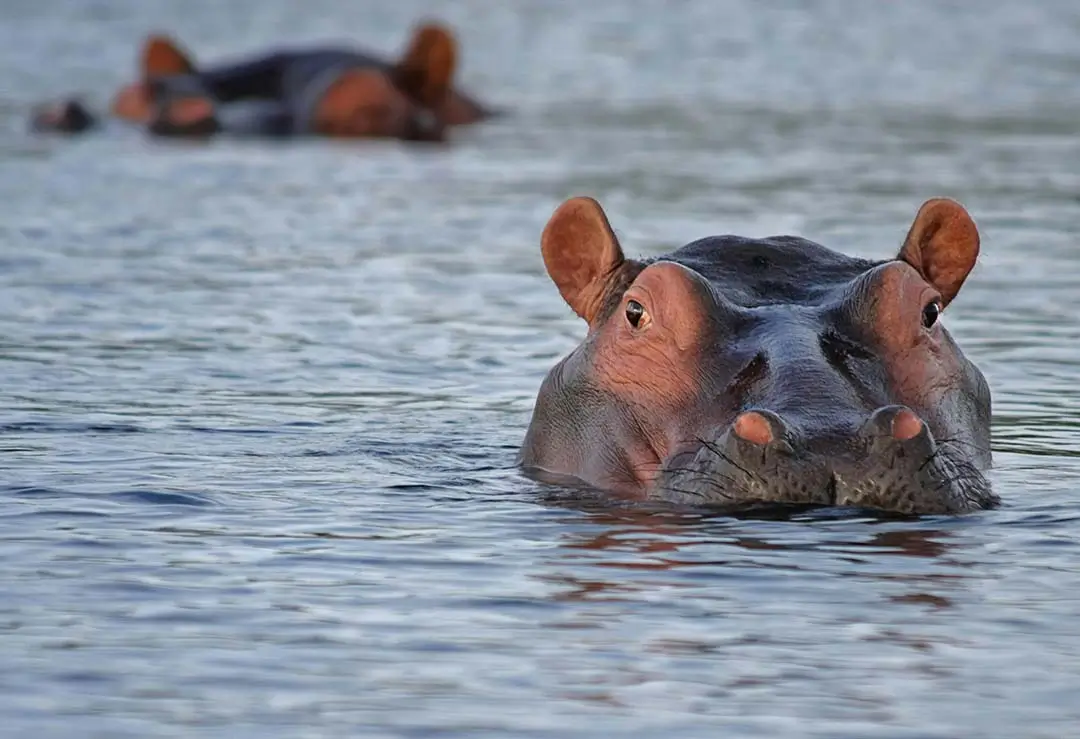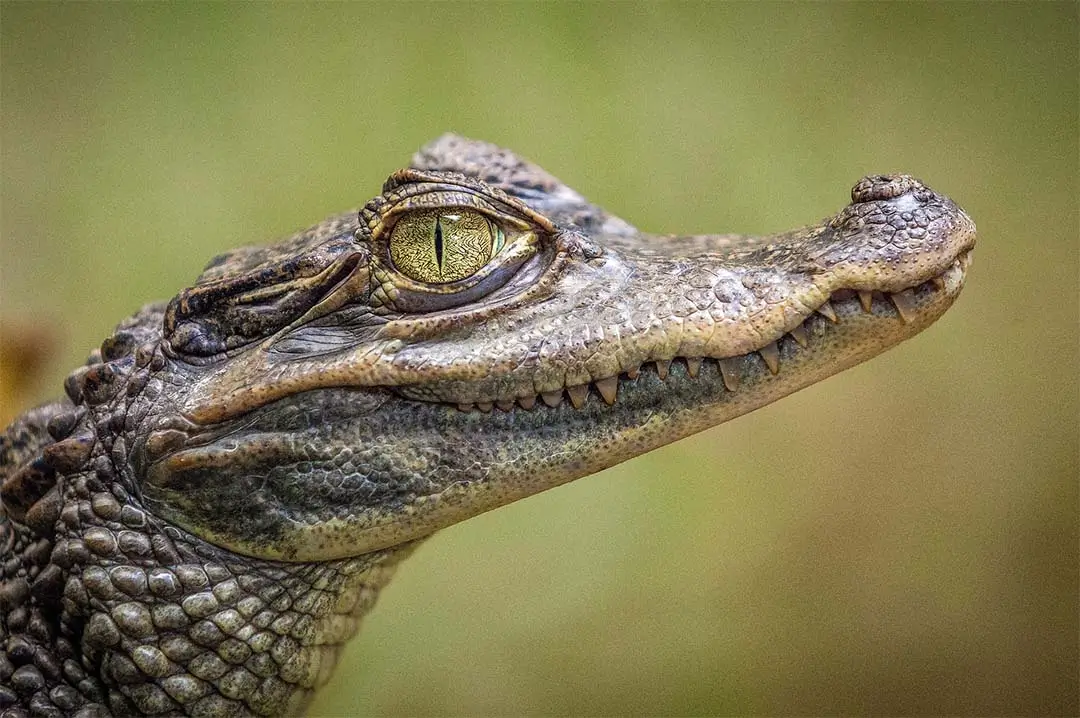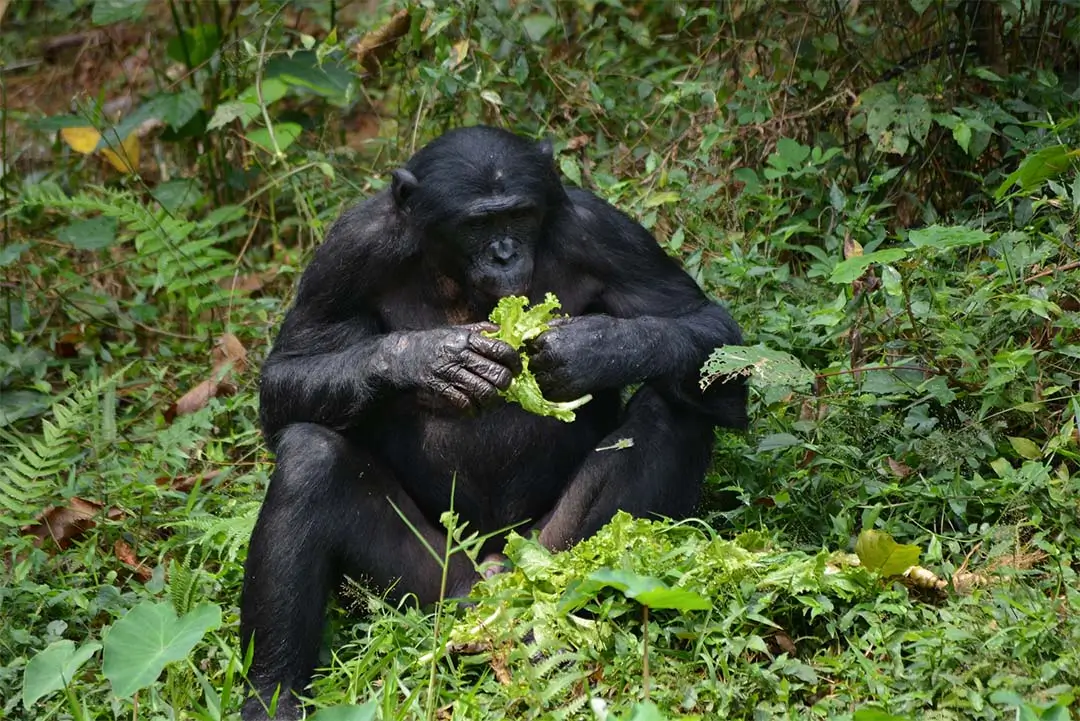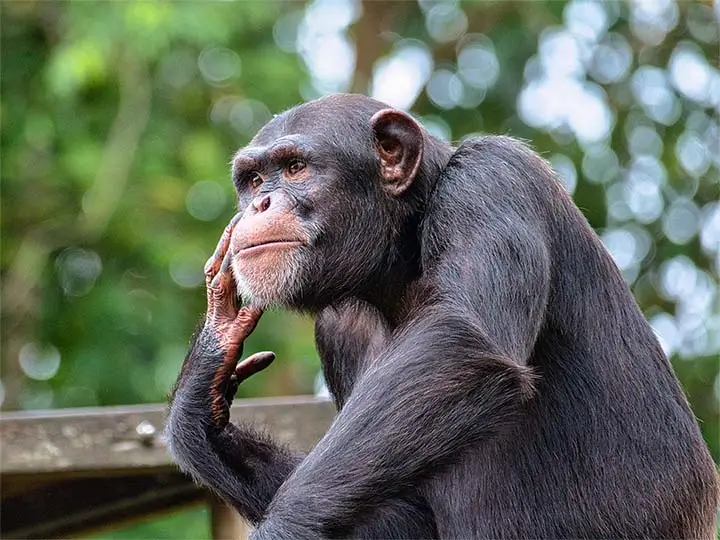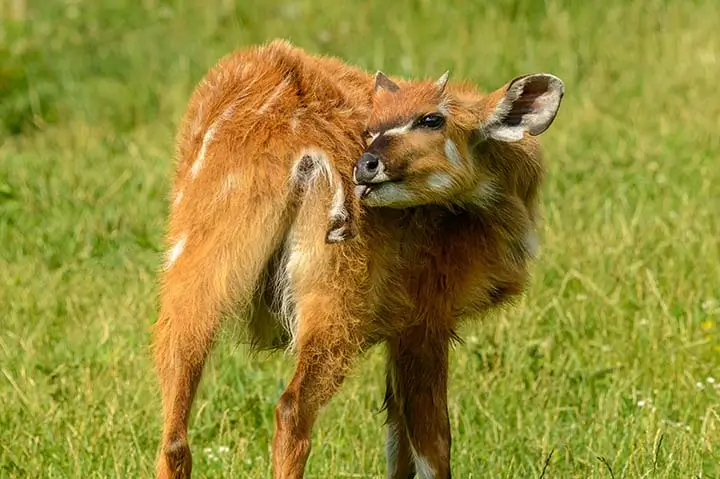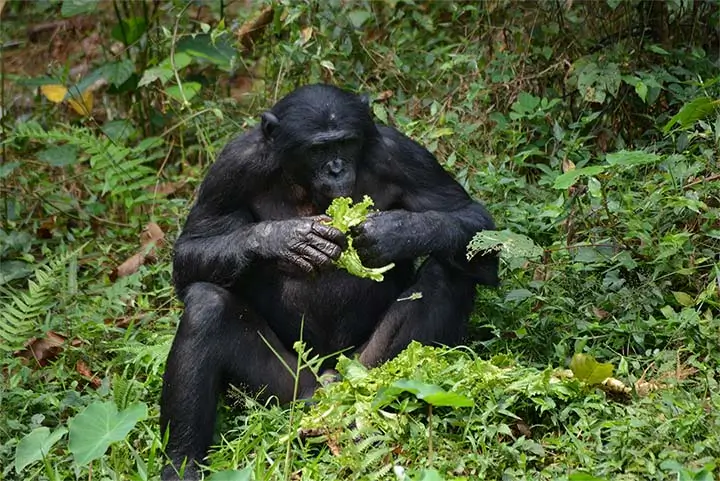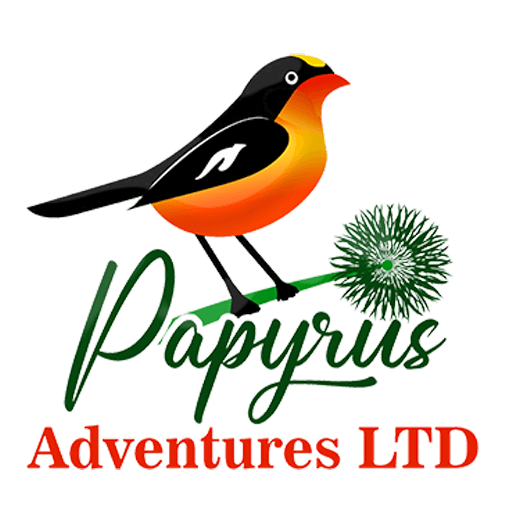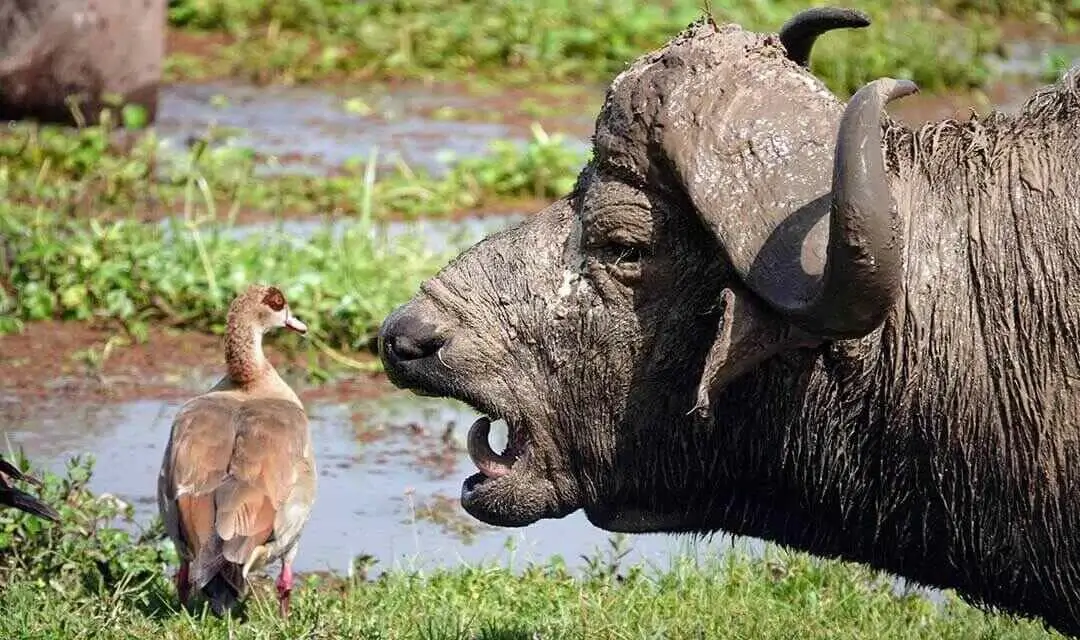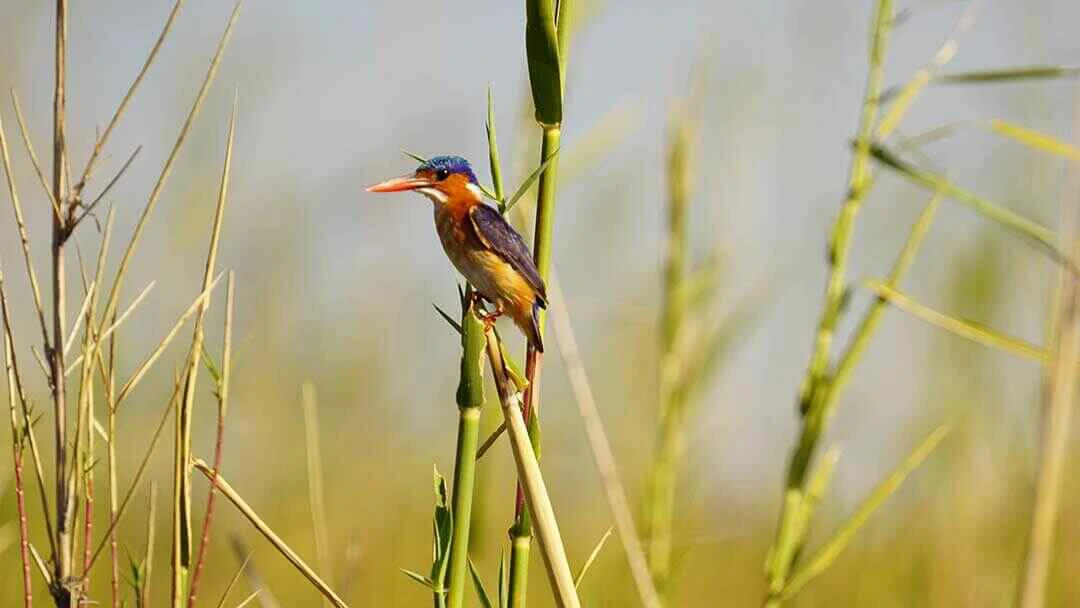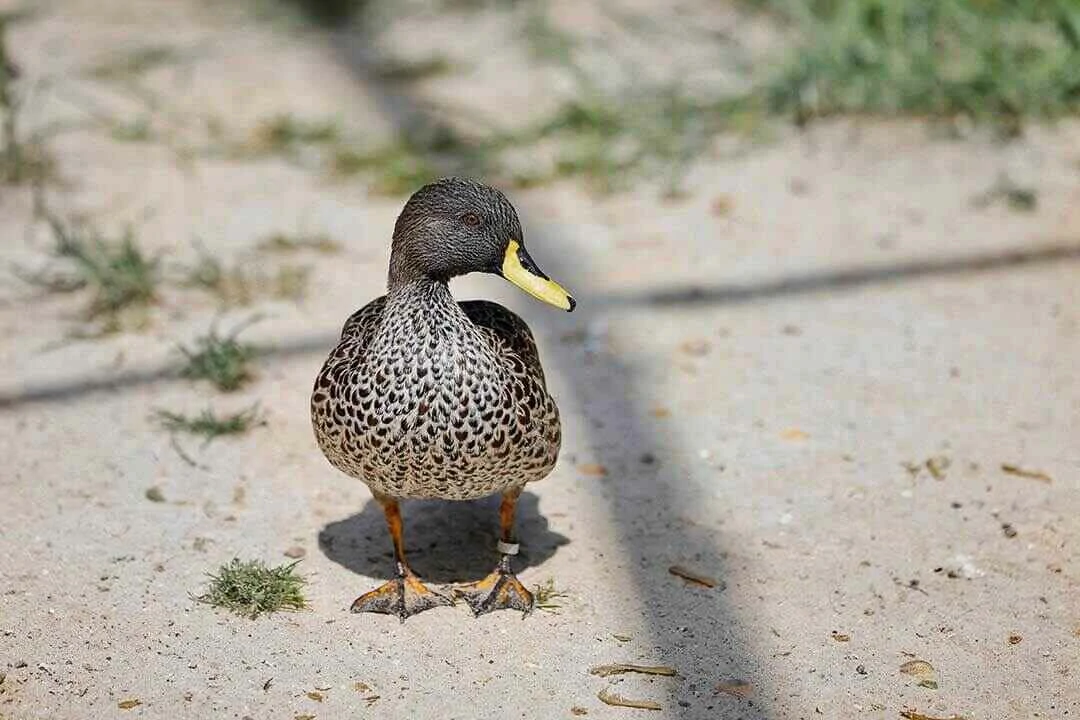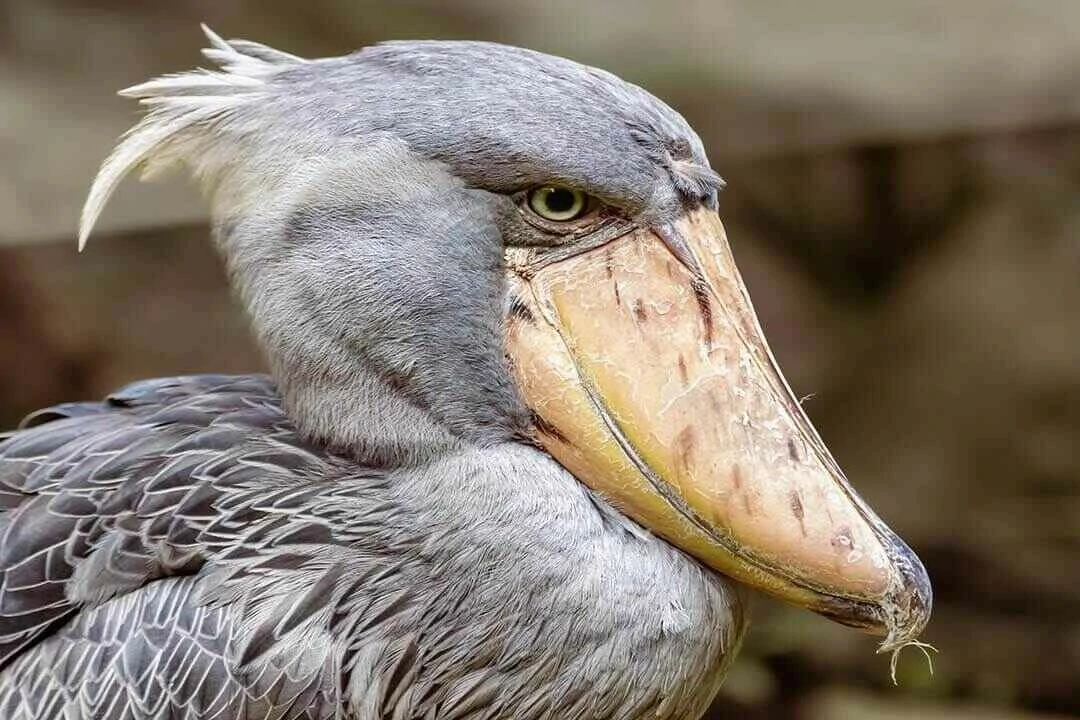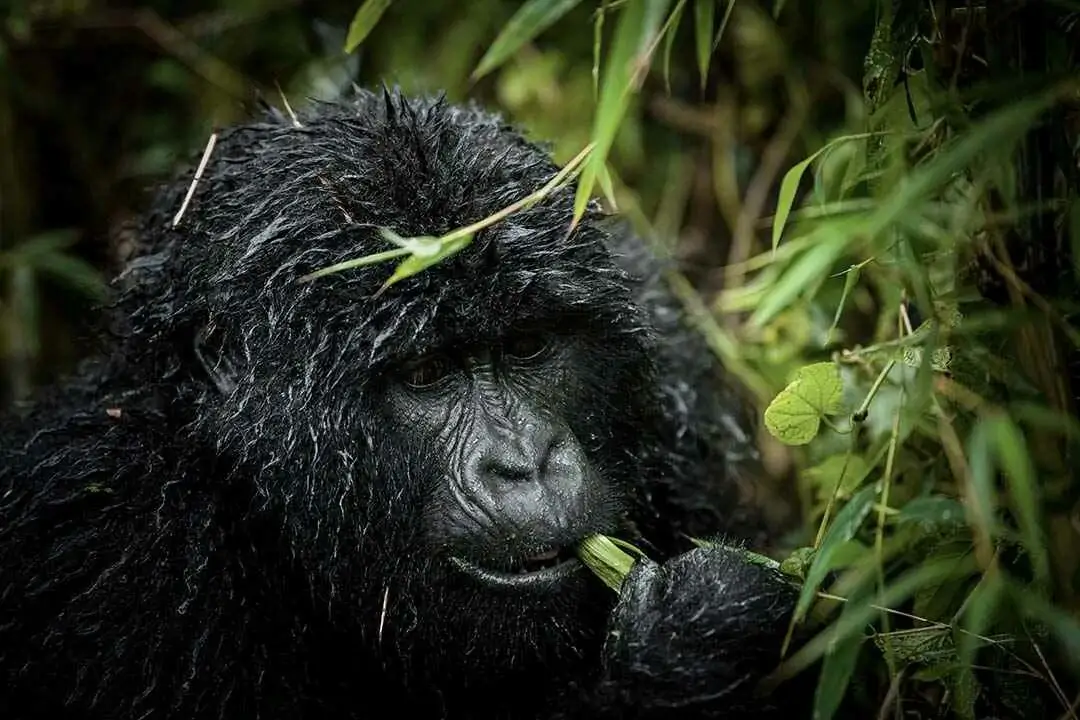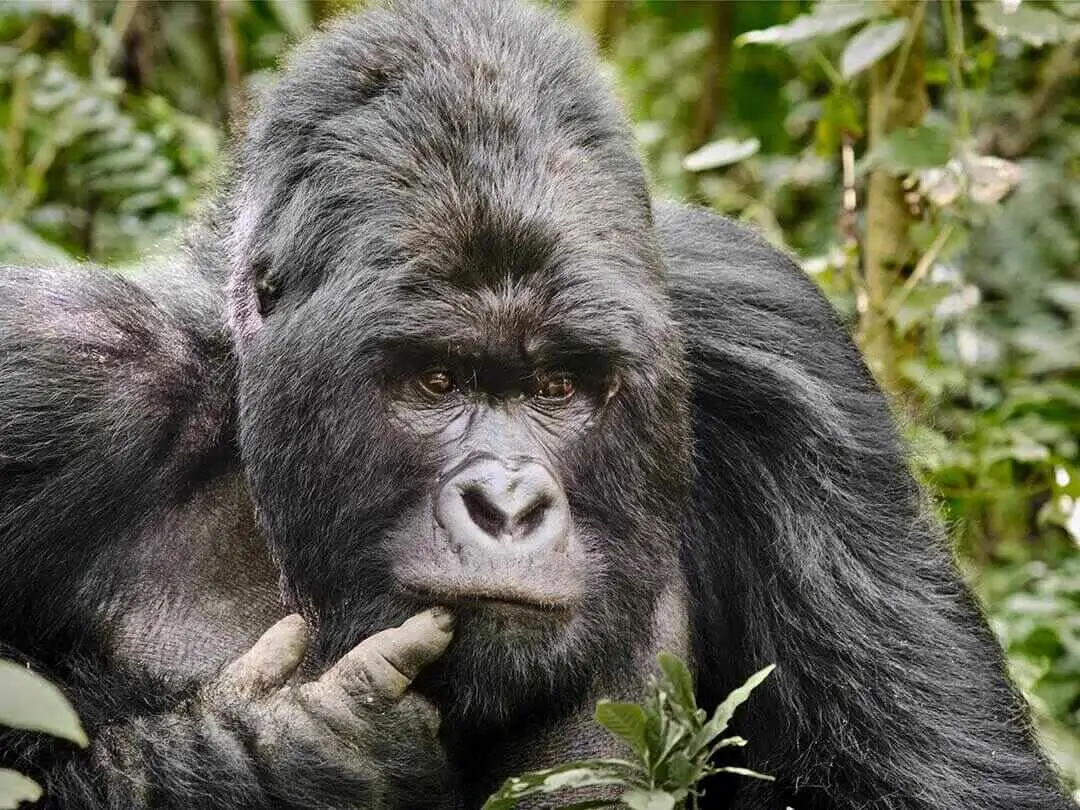Wildlife in Salonga National Park
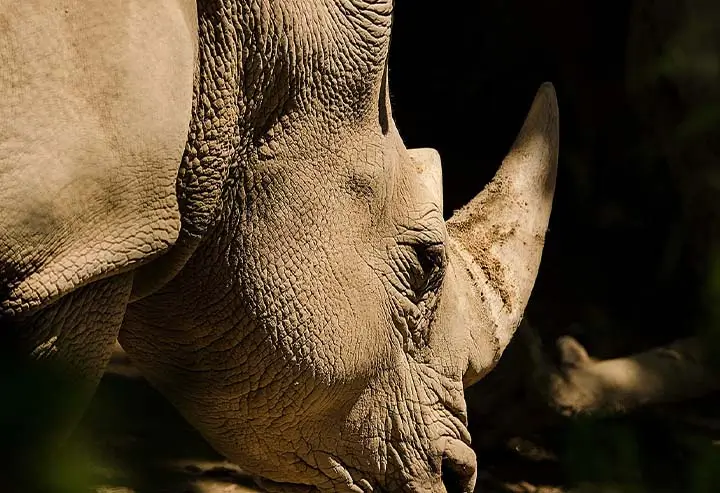
White Rhino
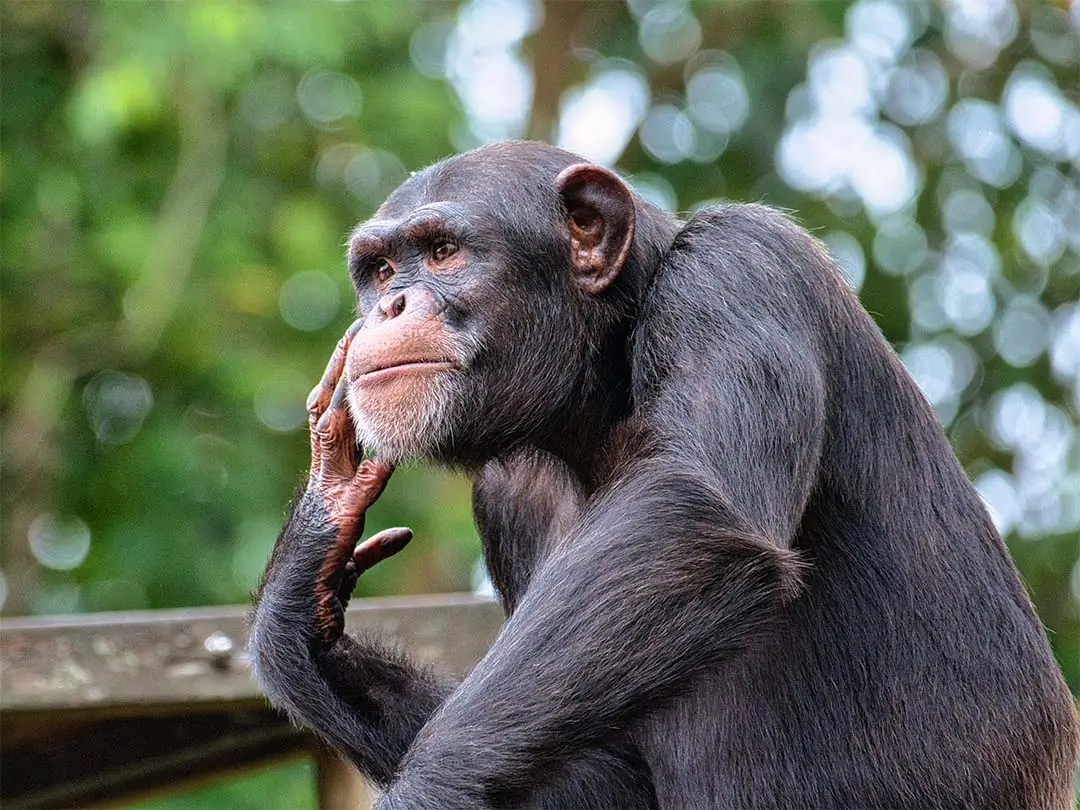
Pygmy Chimpanzee
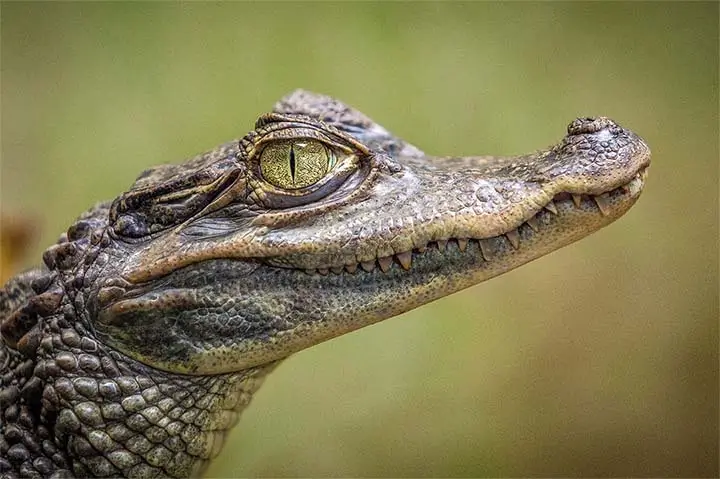
African Thin Shelled Crocodile
Salonga National Park was established in 1970 and covers an area of 33,350 kilometer squared. Salonga is headquartered in Monkoto, Tshuapa Province in the central Congo River basin, 100 km south of Boende, midway between Kinshasa and Kisingani, in a very isolated region. Salonga National Park is Africa's largest tropical rainforest reserve. Located in the heart of the middle Congo River, the park is very isolated and accessible only by water.
It is home to many endemic endangered species such as the Congo peacock, pygmy chimpanzee, forest elephant and the African thin-shelled crocodile. The park consists of two large blocks North and South separated by a corridor approximately 45 km wide to relocate some of the population that originally lived in the park. The park is divided into six administrative regions: Washikengo, Monkoto, Mondjoku, Mundja, Yoketelu, Anga, while the park covers four provinces of the Democratic Republic of the Congo:Tshuapa, Mai Ndombe, Sankuru and Kasai.
It also has one of Africa's most diverse primate communities, including the endangered golden-belliedmangabey, Thollon's red colobus Angola Pied Colobus, Allen's marsh monkey, De Brazza's monkey and the black mangabey. The birds are still not well known, but the endemic Congo peacock can already be considered a major attraction for bird lovers. Due to its high biodiversity and relatively intact forests, the park's forest ecosystems and its water system function unchanged. The environmental services that these ecosystems provide to communities around the park and throughout the Congo Basin are therefore significant, particularly in terms of carbon storage, climate regulation, and water, fish and (bush) meat production.
The diversity of plant and animal species is remarkable: 51 species of mammals, 129 species of fish and 223 species of birds. Several of these species are internationally threatened, especially the forest elephant and the bonobo. Other large mammals include the leopard, nine species of antelope including bongo and 5 species of duiker, giant pangolin and hippopotamus.
The Park is the largest nearly intact tropical rainforest national park in Africa and the second largest in the world. It is designated a WWF Global 200 Freshwater Ecoregion. It is the habitat of a very diverse flora and fauna and many endemic endangered species, such as the bonobo (pygmy chimpanzee), for which it was partly founded to protect, the Congo peacock, the forest elephant and the African slender-snouted crocodile. The closest international airport is Kinshasa International Airport, which connects to Mankato airstrip.
History of Salonga National Park
The phenomenal protected area was named Tshuapa National Park in 1956, but after reaching its current size in 1970, following a statement by then-President Mobutu SeseSeko, it became Salonga National Park under the direction of the IinstitutCongolais pour la Conservation de la Nature (ICCN) and World Wild Fund for Nature since 2015. It was later declared a UNESCO World Heritage Site in 1984. Due to the improvement in its conservation status, it became a protected area at risk from 1999 to 2021.
Physical Features
Salonga is the second largest tropical rainforest national park in the world and the largest in Africa. The two sectors of the park extend along parallel southeast-northwest river basins that include three types of landscapes: low swamp-forested plains, river terraces, and high dry forest plains, each with its own vegetation. In the northern sector,between Lomela and Loile rivers, the western valleys are large and winding with marshy banks. In the higher country to the east, the valleys are deeper and the rivers can flow under cliffs up to 80 meters high. The southern block is located between Luilaka and Lulajoki. The soil has a thin layer of humus on clayey sand with several laterite waves. In the lower western valleys, up to half of the surface is hydromorphic.
Climate
The mean annual temperature is 24.5°C. Cloud cover is often complete until 10 a.m. and is associated with fog and storms from midday to 3 p.m., but skies are often clear at night to 4 a.m. The average relative humidity is 86%, regularly reaching saturation at night, but maintaining an average of 77% during the day. Temperatures are stable with daily mean variations between 20°C at night and 30°C during the day. It is an equatorial climate with hot and humid with an annual rainfall of 2000mm over most of the reserve, falling to 1700m in the south, and with a slightly drier season from June to August. Rains are mostly downpours and on only 30 days in the year is precipitation less than 20mm. Seasonal flooding is normal.
Vegetation
It's high to 45m equatorial forest trees cover most of the area, varying in composition according to the geomorphology. The principal forest types are swamp, riverine, and dry-land forests. Grassland covers less than 0.5% of the park's area; in the northern block it is known locally as botoka-djoku or elephant's bath. The National Park covers over a third of the immense Salonga-Lukenie-Sankuru forest block and is the second largest almost intact tropical rainforest reserve in the world. In the south there are natural but man-maintained savanna-like clearings termed esobe. There is some secondary forest on disturbed land.
Fauna
There are more than 50 large to medium sized mammals. The most important of these is the bonobo or pygmy chimpanzee which is endemic to the Democratic Republic of Congo where the population in 1979 was estimated at 13,000 and in 2002-3 at 14,800. Bonobos have been seen in the northwest, northeast and southeast margins of the Park most remaining in the southeast of the south block and the northeast of the north block. The forest and savanna elephants are common. Other primates include Angolan colobus ,thollon's red colobus , West African red colobus, dryad monkey, red-tailed monkey, Allen's swamp monkey and the endemic black mangabey. In savanna-like areas in the south there are several grassland-dependent species including side-striped jackal, serval and common duiker.
Amongst other animals are giant ground pangolin, tree pangolin, black-bellied pangolin, Congo clawless otter, spotted-necked otter, African golden cat, red river hog, hippopotamus, blue duiker, yellow-backed duiker, bay duiker, African forest buffalo, bushbuck and water chevrotain. Reptiles include African slender-snouted crocodile.
People
The density of human populations on the periphery of the park is relatively low: it is estimated to be at most 3 inhabitants per kilometer squared. Salonga National Park is composed of two blocks (North and South) separated by the 45 kilometers wide Monkoto corridor. This is where a large number of people who resided within the park perimeter before its creation in 1970 were subsequently resettled. The landscape is populated mainly by the Mongo, who are one of the largest ethnic groups in the country, represented by the subgroups Ndengese, Nkundo, Yaelima, and Isolu. Other groups include the Mbole and the Twa pygmies. Not with standing the relatively low human population density, villages are still located within 50 km of the park boundaries, with main concentrations in the urban centres of Oshwe, Dekese, Boende, Inongo, Bokungu and Monkoto.
Cultural Heritage
The native Iyalima people are gradually losing their young to out-migration and their ancient independent culture with its low-impact on the forest may decline.
Visitors and Visitor Facilities
There have been very few visitors in the past because of the lack of infrastructure and access, and more recently, civil war even though there is potential for virgin forest tourism. Much of the Park is unexplored.
Management
Civil wars in 1996 and from 1998 on created crises which paralysed conservation but publicised the need for it. As war subsided, effective ICCN activity and help from outside the country began to be restored. The Park suffers from large scale commercial poaching by the army and armed gangs and heavy illegal fishing especially in the northeast and northwest of the Park. In 1985 IUCN and WWF representatives suggested that increased effort should go towards improving knowledge of the region: making the area's people more aware of the value of the park, and if possible involving them in management activities; improving the information on the relationship between the local people and the park's ecosystems, such as studies in ethno-botany; improvement of the park's infrastructure and building a research station. This is the only part of the Congo basin where the bonobo is nominally protected. The number of staff working in the Park is totally inadequate for the huge area where access is extremely difficult. There is a lack of sufficient management; management planning, infrastructure, professional trained staff and equipment for patrols and communications and 65% of the guards are over 40.
Activitives at this park
Wildlife
This is the most activity to do in the park with the diverse wildlife in the park and some endemic species to the Congo basin. Animals here include; bonobos, chimpanzees, red river hog, Sitatunga, red colobus monkey, dwarf chimps, golden cats, wolf monkeys, pottos monkeys, Mangabeys, white rhinos, thollons red colubus and more. Most tours include river cruises along the Congo River where you can experience the national park up close and personal. Seeing extremely rare and important wildlife and plants in one place is sure to be unforgettable and absolutely amazing. In total there are 51 mammals, 300 reptiles, 130 species of fish, and over 220 species of bird.
Safaris
Salonga is a beautiful and secluded national park best explored by motorized riverboats and on foot. On river cruises, visitors can get up close and personal with the grandeur of nature in its raw form. There's nothing like cruising down a wide river trying to spot wading birds, raptors and primates frolicking in the treetops. River guides present the culture, history and nature of the region. Guided walking safaris are another incredible way to experience the Democratic Republic of Congo on foot. Other water-based excursions include fishing safaris in the park's many tributaries and marshes.
Birding
The avifauna is not yet well known, but 101 of the 228 species typical of the Guinea-Congolese forests have already been recorded and the number is rising to 153. Among the species identified is the Congo peafowl, whose distribution is limited to the forests in the center and the east of the Congo Basin. Other birds here include; paln vulture, black bellied bustard, Congo peacock, cattle egrets, black stork and more. More than 300 birds are recorded in the rain forest of Salonga National park while half of which are residents.
Fishing
Since the park is accessed by water, there is a lot of fishing to do around the park with over 400 fish species. Tourists have to carry their own fishing gear.
Guided nature walks
Unlike game viewing by vehicle, guided nature walks are conducted on foot, which allows tourists to get up close and personal with the park's attractions, especially wildlife such as Allen's swamp mangabey, tree pangolins, golden cats, leopards, black baboons, giant, pangolins, golden-bellied mangabey, pygmy bush baby, bonobo, elephants and many others, butterflies, birds, trees and plants.
Cultural encounters
Salonga National Park is surrounded by the Iyalima people where tourists can learn about their unique culture and lifestyle. You will also be entertained by some of their refreshing traditional dances and songs and you can also taste their delicious food.
Hunting
Visitors to Salonga National Park can explore the wilderness on a hunting trip, but it is best to do so in the company of an armed ranger. Any tourist who is interested in visiting this place can do so during the dry months from June to August, when the vegetation is not very dense and there is no flood, which offers very clear and impressive views of the wild life, as it can be visited throughout the year.
The reception station is located in Monkoto. To get there, you need two, three days on motorbike from Boende to Monkoto, with different ferry streams or a day in a fast canoe. There is a minimum of 5 days to plan several forest trips, accompanied by dogs and park guards. The Aviation SansFrontières company, based at Hotel Benghazi in Mbandaka, flies regularly on Boende and Monkoto even if a priority is reserved for ngos.Among the Congo's hard-to-reach national parks is Salonga National Park, It can also be accessible by water transport, made available on a boat excursion on the Congo River.
Location
2222+235, Ikali, Congo - Kinshasa
Size
36,000 Square Kilometers
Do You have any Questions?
Our Experts are ready to provide answers
Explore Out Top Tour Ideas
Travel With Us
When considering your next adventure, Papyrus Adventures stands out as the ideal travel companion, offering a comprehensive package of benefits that ensure an unparalleled experience.
Best Price Guaranteed
With our "Best Price Guaranteed" policy, you can rest assured that you are getting the most value for your investment.
Professional Safari Guides
Our commitment to excellence extends to our team of "Professional Safari Guides," who possess extensive knowledge and expertise, ensuring a journey filled with insightful and unforgettable moments.
Locally Owned Company
Papyrus Adventures is deeply rooted in the destinations we explore, allowing us to provide authentic and immersive experiences that showcase the rich cultures and landscapes of each location.
24-7 Customer Support
our "24-7 Customer Support" ensures that your needs are met around the clock, providing peace of mind and a safety net for any unforeseen circumstances.
Frequently Asked Questions About Salonga National Park
The best time to travel to Salonga National Park is during the long dry season from May to September, with July clearly being the driest month followed by June. Also, the temperature decreases during these months. In January-February, the dry season is shorter.The park is wet for most part of the year.
Accommodations in the park are comfortable and vary from campsites to affordable and luxurious gangs. Low-cost accommodation requires visitors to be completely self-sufficient. For accommodation, it is possible to stay at the Etate village in the ngo's campement camp.
However, it is important that whenever you decide to visit this Salonga National Park, you always have enough warm clothes with you because the climate is usually cold and the sun does not shine in the park because it is covered by tropical forests.
Despite being one of the hard to reach parks in Democratic Republic of Congo, Salonga National Park can be reached on a domestic charter flight from Monkoto, Anga and Mundja. It is 100 kilometers south of Boende between Kisangani and Kinshasa.
